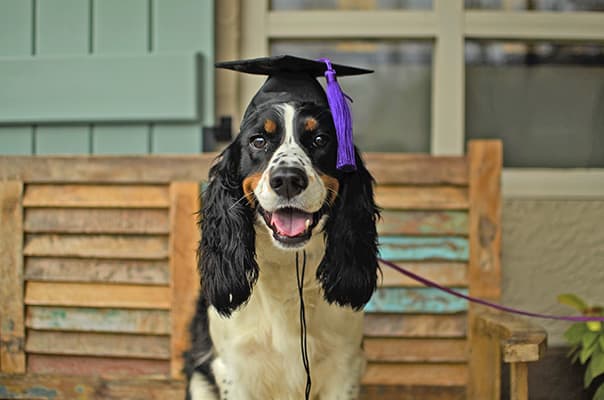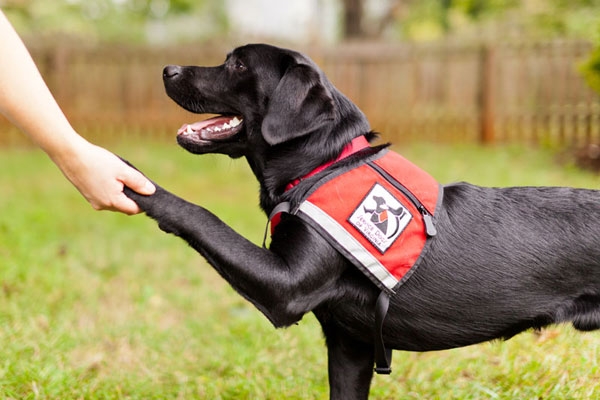Expert Dog Training Services to Help Your Pet Learn New Skills
Beginner's Overview to Successful Dog Training in your home
Effectively training a pet dog at home needs a nuanced understanding of canine habits and reliable interaction approaches. Establishing clear training goals, utilizing high-grade rewards, and preserving uniformity throughout family members are essential elements. Incorporating training right into daily routines can boost both engagement and retention.
Recognizing Pet Habits
Understanding pet habits is essential for effective training and cultivating a harmonious relationship in between humans and their canine companions - Puppy Training. Pets communicate largely with body language, articulations, and faces, making it essential for proprietors to translate these signals properly. Acknowledging behaviors such as tail wagging, grumbling, or trembling can offer insights into a canine's emotion and intents
In addition, understanding the all-natural impulses of pet dogs, such as their pack mindset, aids proprietors establish management roles within the household. This is essential for producing a structured setting where pets feel protected and are extra receptive to training. Pet dogs are additionally influenced by their socialization experiences; very early direct exposure to various atmospheres, individuals, and various other animals can substantially shape their behavior later in life.
Typical behavior issues, such as aggression, anxiousness, or excessive barking, typically stem from misunderstandings or unmet demands. Observing and dealing with these issues immediately can prevent escalation and guarantee a favorable training experience. By cultivating a deep understanding of dog behavior, owners can tailor their training techniques to match their canine companions, ultimately bring about a well-behaved and happy pet dog.

Crucial Educating Tools
A well-equipped training area can substantially boost the effectiveness of canine training in your home. Important training devices make sure that both the fitness instructor and the canine can participate in efficient sessions that cultivate discovering and bonding.

Purchasing a strong chain and a comfy, well-fitting collar or harness is essential for safety and control. These tools help establish boundaries and make certain the pet continues to be safe and secure throughout training. In addition, an assigned training area, without distractions, aids focus for both the pet dog and the trainer.
Training help such as training pads, cones, or dexterity tools can likewise improve the experience by introducing variety and difficulties. Having a notebook or digital app for tracking progress can be important, allowing you to keep in mind successes and locations for improvement. Utilizing these important devices will create a positive training setting and lay the foundation for effective understanding.
Producing a Training Regimen
Establishing a consistent training regimen is important for effective pet dog training at home. A well-structured regular not only assists in enhancing preferred behaviors yet likewise provides your pet dog with a sense of safety and security and predictability. To produce an effective training routine, start by determining certain training goals, such as standard commands, leash strolling, or housebreaking.
Select a designated time daily for training sessions, ideally when your pet dog is alert and receptive. Sessions needs to be short, about 5 to 15 minutes, to keep emphasis and avoid tiredness. Uniformity in timing and environment will boost your canine's discovering experience.
Incorporate training into day-to-day tasks to reinforce Go Here skills. Technique commands throughout strolls or mealtime, which integrates learning into all-natural regimens. In addition, remain versatile and change the regular as essential, accommodating your canine's power levels and mood.
Positive Reinforcement Strategies

When applying favorable reinforcement, it is important to select rewards that are motivating for your dog. High-value deals with, such as small pieces of poultry or cheese, can be especially effective throughout training sessions. In addition, differing the benefits can preserve your pet's interest and interest.
Beginning with straightforward commands, like "rest" or "stay," and visit this site slowly development to much more complicated jobs. Uniformity is crucial; make sure that all household members make see here now use of the same commands and benefit systems to stay clear of confusion.
Moreover, it is crucial to continue to be client and prevent aggravation. Pet dogs, like human beings, learn at their own rate. By fostering a helpful training setting through positive reinforcement, you can improve your pet's learning experience while enhancing the bond between you and your fuzzy friend, laying the foundation for successful training outcomes.
Common Training Difficulties
While training a canine in your home can be a satisfying experience, it often comes with a set of typical difficulties that can check both perseverance and uniformity. One widespread concern is distraction. Dogs may end up being quickly averted by sounds, movements, and even scents in their atmosphere, making it challenging to keep their focus throughout training sessions.
One more obstacle is inconsistency in commands and reinforcement. It can hinder and confuse the pet progress if household participants make use of various signs or incentives. Establishing a unified method is vital for reliable interaction.
Furthermore, canines can experience disappointment or stress and anxiety, especially if they do not comprehend what is anticipated of them. This can lead to unfavorable behaviors, such as eating or barking.
Lastly, the timing of reinforcement is crucial. Delayed benefits can lessen the performance of favorable support, as dogs might fail to attach the actions with the benefit.
Getting rid of these challenges calls for commitment, clear interaction, and an organized training plan - Puppy Training. Acknowledging and attending to these common barriers will certainly lead the way for an extra delightful and successful training experience in the house
Final Thought
To conclude, successful pet dog training in your home demands an extensive understanding of canine actions and effective interaction methods. By developing clear training goals and making use of premium deals with together with favorable support, the training procedure comes to be extra rewarding for both the pet dog and the instructor. Consistency, persistence, and versatility are necessary components that facilitate learning. Inevitably, incorporating training right into daily regimens improves the bond in between pet and proprietor, making the experience both efficient and delightful.
Establishing a consistent training routine is necessary for effective dog training at home.Positive reinforcement methods are fundamental to efficient pet training, promoting wanted behaviors through incentives instead than penalty. By fostering a helpful training environment through favorable reinforcement, you can improve your canine's understanding experience while enhancing the bond in between you and your furry friend, laying the groundwork for successful training results.
In verdict, successful dog training at home requires a detailed understanding of canine actions and effective interaction techniques. By establishing clear training objectives and utilizing top quality treats alongside favorable reinforcement, the training procedure becomes extra satisfying for both the instructor and the pet.